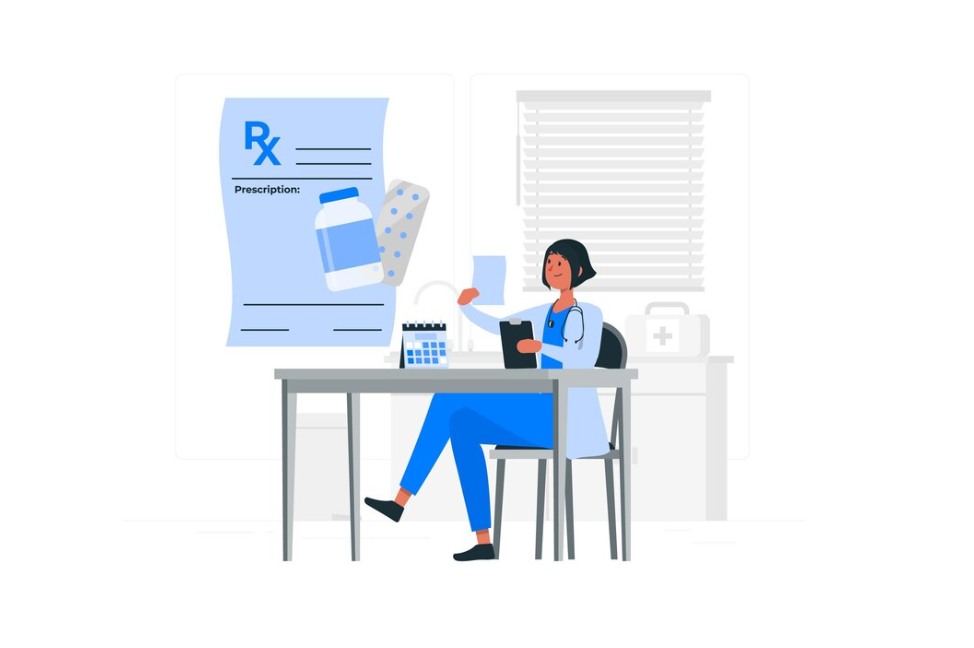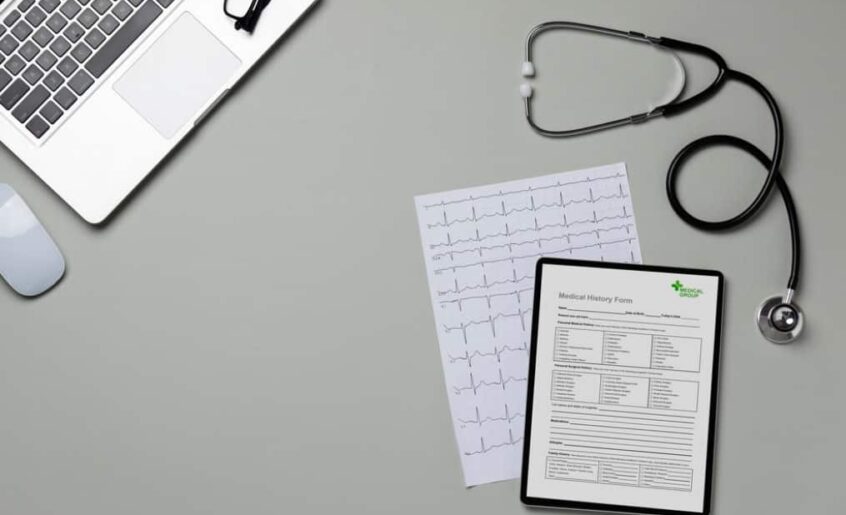As the global health crisis escalates, medical organizations worldwide are urgently exploring strategies to optimize their operational and financial performance. A key strategy in this optimization is the fusion of Electronic Health Records (EHR) with medical billing practices. This vital convergence significantly elevates the precision in monitoring and documenting health issues. Medical facilities can harness the power of Electronic Medical Record (EMR) systems, which offer comprehensive medical billing features. This method simplifies various functions including electronic task handling, claim administration, financial transaction processing, and income generation. The fusion of medical billing with EHR markedly improves aspects such as accurate coding of claims, efficient tracking, and billing processes. The already evident advantages of EHRs in the American healthcare framework are further enhanced by their application in integrated medical billing. With the widespread adoption of EHRs across U.S. healthcare institutions, the practice of integrated medical billing has emerged as a norm.
Implementing Integrated EHR and Medical Billing Systems
In the healthcare sector, the integration of Electronic Health Records (EHR) with medical billing systems is a pivotal step towards enhancing efficiency and accuracy. It’s crucial to select an integrated medical billing solution that aligns with the specific needs of a healthcare organization. A key aspect to consider is EHR interoperability, which plays a significant role in seamless integration. When implementing EHR into medical billing processes, it is essential to address both technical and internal challenges. The medical billing solution should be assessed from the perspective of its compatibility and integration with existing EHR systems.
Implementation Essentials
Combining Electronic Health Records (EHR) with medical billing systems is essential for managing daily billing operations effectively, fostering the automation of healthcare processes. A proficient medical billing system must excel in generating detailed charts for medical claims, covering aspects like patient visits, diagnoses, laboratory information, and more. Integrating all operational elements, such as Electronic Medical Records (EMR) and EHR, into a unified billing system is critical. Customizable features in EHR systems should be explored to achieve an integration that is conducive to billing, thereby navigating various technical obstacles and creating a strong medical billing framework.
Data Transition Process
The transfer of data is a pivotal component in the deployment of EHR systems. During the shift to electronic health records, it’s recommended to incorporate medical billing integration services. Addressing challenges like moving away from old billing systems and manual processes is crucial. Maintaining access to patients’ medical histories is key for uninterrupted workflow. Integrated EHRs, along with medical coding solutions, support effective data exchange. A holistic hospital management software should provide access to medical histories for insurance claim processing and adding new patient data. Successful EHR billing hinges on proficient EHR integration with a focus on the data transition phase.
In addition to technical aspects, staff and physician training is paramount for effective EHR integration. Proper training ensures accurate usage of the integrated system. Integrated medical billing demands the involvement of all organizational members, including administrators, staff, providers, physicians, and patients. Comprehensive training programs focusing on integrated medical records are essential. Interdepartmental training on EHR billing and coding is crucial for a smooth transition from paper to electronic records. Ensuring that the entire healthcare organization is proficient in using the new system is vital for its successful implementation.
Compliance
Lastly, compliance with regulations like HIPAA is a critical aspect of EHR implementation. It’s important to thoroughly evaluate the solutions deployed by the healthcare organization to ensure they adhere to all compliance protocols. This careful scrutiny is necessary right from the outset of the implementation process.
Achieving Smooth Integration in Healthcare

- Strategizing and Goal-Setting for Your Healthcare Organization: Begin by meticulously planning and defining goals that align perfectly with your healthcare organization’s needs. Gain a crystal-clear understanding of the requirements;
- Vendor Selection and Technology Integration: Conduct a thorough analysis to select a vendor who can meet your specific requirements while harnessing state-of-the-art technologies to enhance your operations;
- Prioritizing Data Architecture for Seamless Migration: Recognize the pivotal role of data architecture in ensuring a smooth data migration process. Create and execute a design that places organizational data at the forefront of your integration efforts;
- Rigorous Testing for Timely Success: Implement periodic testing throughout the deployment phase to ensure your project stays on track and meets critical deadlines;
- Fostering Comprehensive Organizational Understanding: Cultivate a comprehensive understanding of the integration process across all levels of your organization. This shared knowledge will pave the way for a successful implementation;
- Establishing Support Protocols for Challenges: Prepare and have support protocols in place to address any challenges that may arise during the integration process. This proactive approach will help maintain the momentum toward seamless integration.
The Pros of Integrating EHR with Medical Billing

Pondering the impact of Electronic Health Record (EHR) systems on billing processes? The benefits are diverse and impactful. Merging EHR with advanced revenue management, claim handling, and all-inclusive medical billing can drastically improve efficiency, productivity, revenue, and overall profitability for healthcare organizations. This blend of EHR and billing streamlines processes, surpassing the limitations of traditional paper-based methods by effectively managing claims, payments, and financial details. Essentially, this is the essence of EHR in the realm of medical billing. Additionally, tailor-made healthcare solutions can be developed with a focus on seamless integration of EHR systems.
- Efficiency Boost: Merging EHR with billing systems creates a cohesive, efficient framework that reduces paperwork and manual redundancies. This integrated approach speeds up processes, enhances accuracy, cuts costs, and increases productivity. Integrating medical claims management solutions further strengthens this system;
- Complete Integration: Integrating holistic healthcare solutions with EMR/EHR for billing results in a comprehensive, user-friendly system, optimizing operations across healthcare entities;
- Transparency Enhancement: Combining medical billing with EMR and EHR streamlines the billing cycle, promoting transparency and eliminating unforeseen costs or complications. This synergy minimizes errors and builds patient-provider trust. It also reduces the occurrence of denied or rejected claims, while advanced remittance tools increase transparency;
- Unified System Development: The convergence of electronic medical records and billing services forms a cohesive system, ensuring uniformity in healthcare practices. Enhancing EHR billing with telehealth technologies achieves all-around functionality, fostering integrated participation across the healthcare spectrum;
- Rapid Information Exchange: Integrating EHR and EMR with billing systems cultivates a setting conducive to quick data interpretation and sharing, ensuring prompt delivery of information to healthcare providers and ongoing patient involvement. This integration plays a significant role in boosting revenue generation;
- Billing Precision: Merging EMR with medical billing, along with healthcare credentialing solutions, enables smooth patient data transfer to the billing system. This results in more precise coding, reducing errors and maximizing EHR benefits. It leads to fewer human mistakes, less manual intervention, and faster processing times;
- Employee Satisfaction Enhancement: Efficient systems lead to content employees. EHR and medical billing integration not only simplifies operations but also improves staff morale in healthcare settings. Reduced paperwork and enhanced job satisfaction are key outcomes of this integration. EMR integration in billing processes lessens routine tasks, allowing healthcare professionals to focus more on patient care;
- Error Minimization: Nationwide, EHR interoperability is now a standard in healthcare. Integrating EHR with financial billing systems markedly lowers procedural mistakes through automation. Tailored and ready-made solutions are available to incorporate EHR into billing systems;
- Documentation Streamlining: Combining EHR with billing significantly betters patient experiences by simplifying data collection for scheduling and automating patient records. This enhances patient satisfaction, lightens staff workload, and reduces audit inconsistencies;
- Improved Physician Access: Utilizing electronic health records alongside billing systems grants doctors instant access to updated patient medical histories, leading to more precise treatment and billing;
- Medication Management Optimization: EHR integration with billing systems greatly betters pharmacy operations. Automated prescription handling and medication ordering enhance billing clarity among doctors, patients, pharmacies, and insurers.
Conclusion
Healthcare organizations must transition from paper-based to electronic medical records through healthcare data integration, with the next step being Electronic Health Record (EHR) billing integration for competitiveness. Cutting-edge integrated medical record systems make this transition easy. Prioritizing medical billing integration enhances overall operational efficiency as healthcare companies adopt electronic health records. EMRs offer various benefits for billing and improve compliance. Integrated EHR and billing software take healthcare to the next level, revolutionizing processing. Technological enhancements boost profitability during integration, whether you choose an EMR or EHR solution. Success hinges on seamlessly incorporating billing processes.
